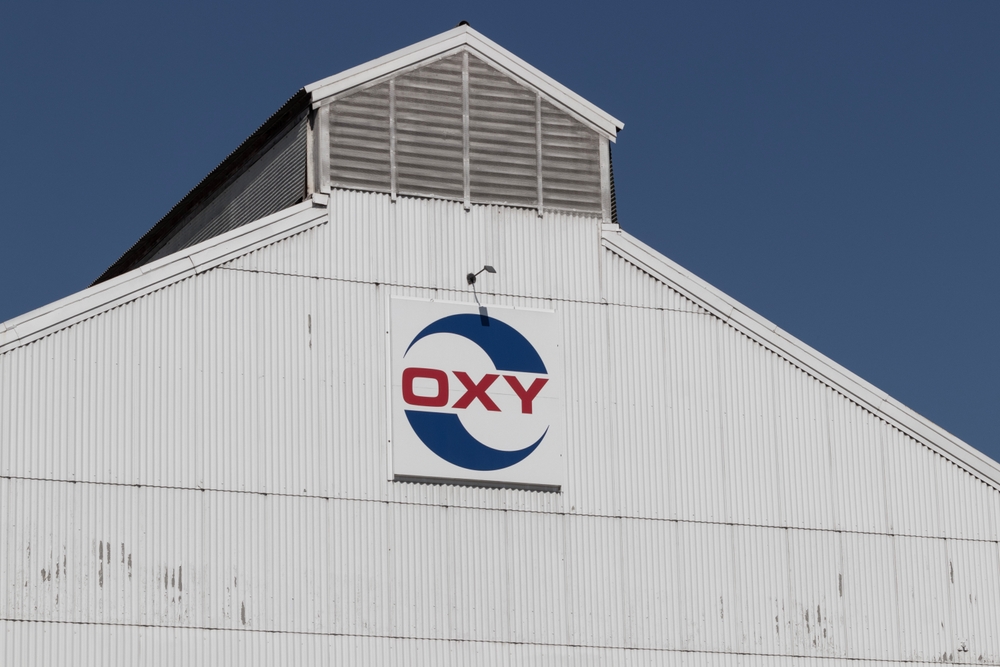
Occidental Petroleum (OXY) hiked its quarterly dividend by 9% - higher than our estimate of 8% last month. This makes OXY stock undervalued compared to its average yield. One way to play this is to sell short OTM puts.
OXY closed at $50.42 on Friday, Feb. 21, down from a recent high of $52.70 on Jan. 15. However, the stock has been fairly flat overall for the past 3 months.
That makes it ideal for out-of-the-money (OTM) put option short-sellers in nearby expiry periods.

With this new dividend hike, investors have a catalyst to push OXY stock higher. I discussed this in my last Barchart article on Jan. 24 ("Occidental Petroleum May Hike Its Dividend Next Month - OXY Stock Could Rise 22%).
Dividend Hike and Average Yield
I projected that OXY would increase the dividend by 8% to 95 cents per year from 88 cents last year. However, on Feb. 19, Occidental announced a 9% hike to 24 cents quarterly, or 98 cents annually.
That means at today's price, OXY stock has an annual yield of over 1.94%:
$0.98 / $50.42 = 0.019436 = 1.94%
However, as I pointed out in my last article, Morningstar shows that its average yield for the past 2 and a half years has been 1.55%, after an adjustment. That implies that OXY stock is worth much more:
$0.98 / 0.0155 = $63.23 per share
$63.23 / $50.42 = 1.254 = +25.4% upside
In other words, if OXY stock eventually trades at its average dividend yield, it could be worth 25% more at $63.23. This is not guaranteed, but it is still a good indication of potential upward value for OXY stock.
After all, the company can certainly afford this dividend hike. Let's look at that.
Strong Free Cash Flow
Occidental reported record annual U.S. production and operating cash flow (OCF) that was slightly higher than last year, before working capital flows. That can be seen in the table below which shows that its OCF was $11.7 billion in 2024, vs. $11.65 billon in the prior year.

However, since Occidental spent more on capex this year, its free cash flow (FCF) came in slightly lower at $4.9 billion vs. $5.5 billion in 2023. These amounts are before working capital flows, which were nominal last year (just $22 million).
Keep in mind that this is well more than enough to cover its new dividend expense. For example, Occidental now has 938.5 million shares outstanding at the end of the quarter at the time of its filing.
That implies that the annual 98 cents dividend will cost just $919.24 million (i.e., $0.98 x 938.5m shs = $919.24 million). This is well below its annual free cash flow (FCF) of about $5 billion.
As a result, Occidental was able to pay down debt last year by $4.5 billion. The company also reported that one of its priorities is to buy back shares again, although it did not do this in 2024.
The bottom line is that the dividend hike looks easily affordable. Moreover, investors can likely expect this to continue.
Shorting OTM Puts for Income
One way to play this, given how flat the stock has been, is to generate extra income by selling short out-of-the-money (OTM) put options in nearby (i.e., one-month or less) expiry periods.
For example, last month I suggested shorting the $47.00 strike price puts expiring this past Friday. These expired worthless, and the investors made 48 cents or a yield of 1.0% (i.e., $0.48/$47.00) with no obligation to buy OXY shares since they expired out-of-the-money.
So, it makes sense to do this again. For example, the March 21 expiration period shows that the $47.50 put strike price has a premium of 49 cents on the bid side.
In other words, shorting these puts provides an immediate yield of 1.03% (i.e., $0.49/$47.50 = 0.010316).

This means that an investor who secures $4,750 in cash or buying power with their brokerage firm can do this trade. They enter an order to “Sell to Open” 1 put contract at this strike price. Then the account will receive $49.00. The cash acts as collateral to secure a purchase of 100 shares in case OXY falls to $47.50, which is 5.8% below Friday's close.
But even if that happens anytime over the next month, the investor has a lower breakeven point. That is because the income already received lowers the actual net buy-in price to $47.50-$0.49, or $47.01, or 6.76% below Friday's close.
Moreover, at that point, the investor has a higher annual dividend yield. They now own 100 shares at $47.01, so the annual yield is over 2.0%:
$0.98 / $47.01 = 0.02085 = 2.085%
Keep in mind that the upside for the investor is higher as well. If the stock eventually rises to $63.23, the investor stands to make 34.5%. Nevertheless, even if the investor's cash-secured put trade never gets assigned, the annualized expected return (ER) is over 12% annually. This is because if they can repeat this trade every month and make over 1.0% in short-put income each month the ER is 12.36% (i.e., 1.03% x 12).
The bottom line is that this is one very interesting way to play OXY stock. It allows an investor to set a lower potential buy-in price and get paid to wait if this happens.







